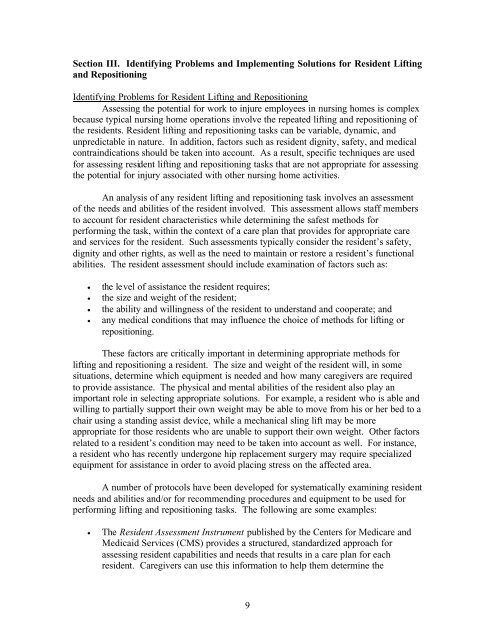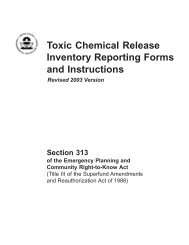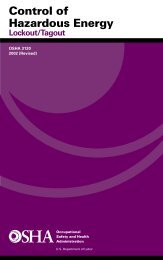Ergonomic Guidelines for Nursing Homes - Seton Resource Center
Ergonomic Guidelines for Nursing Homes - Seton Resource Center
Ergonomic Guidelines for Nursing Homes - Seton Resource Center
You also want an ePaper? Increase the reach of your titles
YUMPU automatically turns print PDFs into web optimized ePapers that Google loves.
Section III. Identifying Problems and Implementing Solutions <strong>for</strong> Resident Lifting<br />
and Repositioning<br />
Identifying Problems <strong>for</strong> Resident Lifting and Repositioning<br />
Assessing the potential <strong>for</strong> work to injure employees in nursing homes is complex<br />
because typical nursing home operations involve the repeated lifting and repositioning of<br />
the residents. Resident lifting and repositioning tasks can be variable, dynamic, and<br />
unpredictable in nature. In addition, factors such as resident dignity, safety, and medical<br />
contraindications should be taken into account. As a result, specific techniques are used<br />
<strong>for</strong> assessing resident lifting and repositioning tasks that are not appropriate <strong>for</strong> assessing<br />
the potential <strong>for</strong> injury associated with other nursing home activities.<br />
An analysis of any resident lifting and repositioning task involves an assessment<br />
of the needs and abilities of the resident involved. This assessment allows staff members<br />
to account <strong>for</strong> resident characteristics while determining the safest methods <strong>for</strong><br />
per<strong>for</strong>ming the task, within the context of a care plan that provides <strong>for</strong> appropriate care<br />
and services <strong>for</strong> the resident. Such assessments typically consider the resident’s safety,<br />
dignity and other rights, as well as the need to maintain or restore a resident’s functional<br />
abilities. The resident assessment should include examination of factors such as:<br />
• the level of assistance the resident requires;<br />
• the size and weight of the resident;<br />
• the ability and willingness of the resident to understand and cooperate; and<br />
• any medical conditions that may influence the choice of methods <strong>for</strong> lifting or<br />
repositioning.<br />
These factors are critically important in determining appropriate methods <strong>for</strong><br />
lifting and repositioning a resident. The size and weight of the resident will, in some<br />
situations, determine which equipment is needed and how many caregivers are required<br />
to provide assistance. The physical and mental abilities of the resident also play an<br />
important role in selecting appropriate solutions. For example, a resident who is able and<br />
willing to partially support their own weight may be able to move from his or her bed to a<br />
chair using a standing assist device, while a mechanical sling lift may be more<br />
appropriate <strong>for</strong> those residents who are unable to support their own weight. Other factors<br />
related to a resident’s condition may need to be taken into account as well. For instance,<br />
a resident who has recently undergone hip replacement surgery may require specialized<br />
equipment <strong>for</strong> assistance in order to avoid placing stress on the affected area.<br />
A number of protocols have been developed <strong>for</strong> systematically examining resident<br />
needs and abilities and/or <strong>for</strong> recommending procedures and equipment to be used <strong>for</strong><br />
per<strong>for</strong>ming lifting and repositioning tasks. The following are some examples:<br />
• The Resident Assessment Instrument published by the <strong>Center</strong>s <strong>for</strong> Medicare and<br />
Medicaid Services (CMS) provides a structured, standardized approach <strong>for</strong><br />
assessing resident capabilities and needs that results in a care plan <strong>for</strong> each<br />
resident. Caregivers can use this in<strong>for</strong>mation to help them determine the<br />
9

















